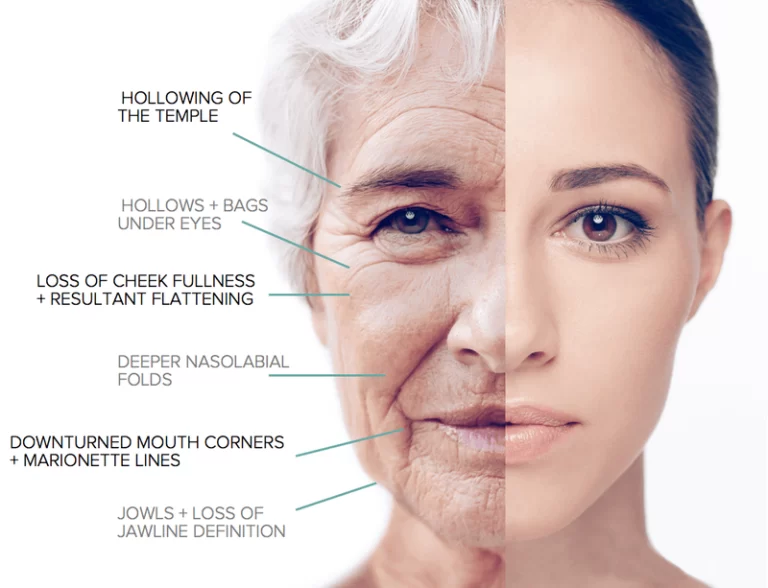Dermal fillers have been FDA approved and used in aesthetics since 2006 to treat “deep wrinkles and defects.” During this time there were 2-3 major manufacturing companies for hyaluronic acid dermal fillers, and the most common area treated was the nasolabial folds (smile lines). Compare that to current day where there are MANY manufacturing companies, MANY different technologies, and of course, MANY more areas on the face and body for application. Non-invasive aesthetic enhancements (all treatments except surgery) soon became became accessible and extremely popular. In this BLOG I will discuss the different types of filler (hyaluronic acid and calcium hydroxylapatite), areas of the face and body that can be treated, and how to ask for and get what you want.
There are 2 different “formulas” for dermal filler that do 2 different things. The most popular type is hyaluronic acid dermal fillers such as Juvederm, Restylane, etc. TV commercials are now selling these kinds of fillers for lip enhancement for example. Hyaluronic acid is a gel that, when injected, attracts 1000 times its own weight in water. The result is volumization of the injected area via hydration for 8 months – 1 1/2 years. “Thicker,” more robust HA fillers will be used over bony areas to increase contour such as the cheek and jawline bones. “Thinner” HA fillers are used in the lips, hands, etc. Calcium hydroxylapatite is the other category of fillers which contain tiny calcium spheres, that when injected, stimulate collagen production to thicken/tighten the skin. There is not nearly as much hydration to volumize with these types of filler compared to HA filler. Radiesse is the most popular brand in this category of fillers, and is injected in various areas (decollete, hands, neck, etc).
It is VERY important to have an injector who has a medical degree higher than masters level, and who is trained in injectables. Ask to see credentials and ask about additional training such as cadaver labs (YES – this SHOULD become necessary for ALL aesthetic injectors, in my opinion). After verifying background and moving toward the consultation, RUN from anyone who offers their advice as to what you should do. This is your face and body, not theirs. Bringing pictures of yourself when you were younger is a HUGE help, and also photos of the outcome you are wanting. Have a LENGTHY discussion with the injector, NOT about how many syringes you can afford, but about exactly where product placement will go and the change in your look that will be created. Cheek filler, for example, will completely change the shape of the lower face and it is the responsibility of the injector to let you know these things you did not know.
After having a clear understanding of which product will be used, where it will be used, and what aesthetic results should be expected, GO LOW AND SLOW. This means it may take multiple sessions to achieve your end goal. A general rule I use is no more than 3-4 syringes per session for the ENTIRE FACE, with appointments spaced out at least a month to allow for recovery and settling of the product. And finally, don’t leave without writing down the brand of product used, how much was used, and treatment date. This may be nonsense for you, but trust me – it is MUCH easier to treat a patient coming to me with this information.


